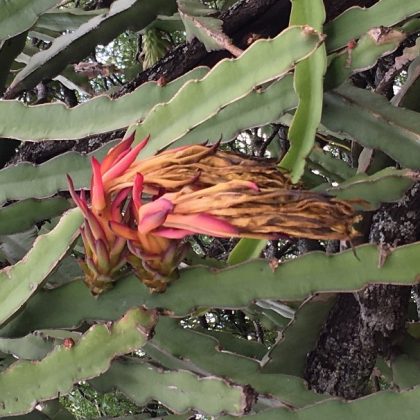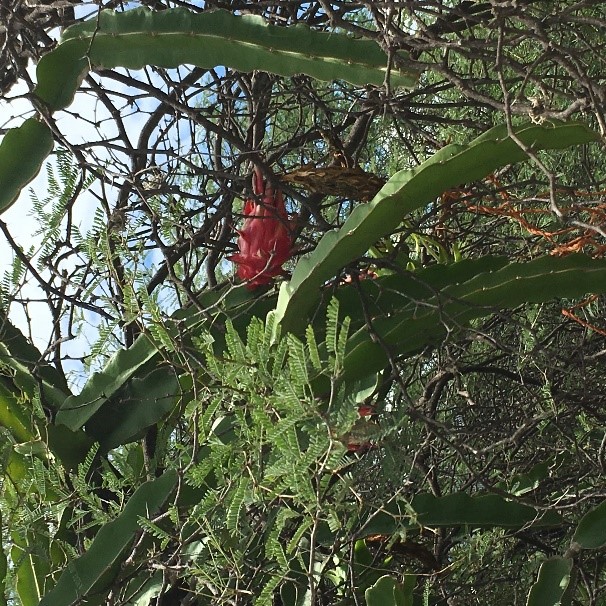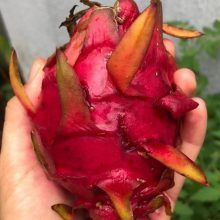Optimal areas and climate change effects on dragon fruit cultivation in Mesoamerica
Dragon fruits are nutritious and healthy; also, in addition to the edible pulp, the coloured peels are utilized in the food and cosmetic industry. The fruit is considered a promising crop for the future because it can be grown in dry habitats. However, despite these uses it is currently under-utilized.

Known as pitayas, pitahayas or dragon fruit, the fruits are produced by vine cacti native to the Neotropics and cultivated around the world. Three species of the Hylocereus group of Selenicereus are the most cultivated. Therefore, in our study we applied ecological niche-based modelling and multivariate methods to identify optimal areas for cultivating the three species from Mesoamerica (S. undatus, S. costaricensis and S. ocamponis), taking into account not only ecological variables and physiological requirements but also preferred hosts. Ecological niche modelling predicts optimal areas based on previous records where plants have been collected or cultivated.

Our study was carried out in the native range of pitahayas, from Mexico to Costa Rica. Climate conditions including temperature and precipitation were obtained from a database and used to identify the best regions for cultivating each species and other regions where the three pitahayas can be grown. Secondly, to understand the effect that future climate change will have on these pitahayas, new models were chosen for additional modelling.

The results suggested that only two of the species, S. undatus and S. costaricensis, will benefit from climate warming and could be cultivated in the north in Mexico to the North of Central America, greatly expanding optimal regions for cultivation. In particular, the suitable range for cultivation of S. undatus, the best known pitahaya, will be expanded considerably. Also, analyses identified common areas where all three species could be cultivated in our area of study in Mexico to Costa Rica, specifically on the Pacific side of this region. These results confirm that dragon fruit is a promising candidate for increased cultivation in a future warmer climate.
The article “Optimal areas and climate change effects on dragon fruit cultivation in Mesoamerica” by Victoria Sosa, Roger Guevara, Brandon E. Gutiérrez-Rodríguez and Catalina Ruiz-Domínguez, was published in The Journal of Agricultural Science and is available free for a month.






